
Home » Destination Stewardship Report » Destination Stewardship Report – Inaugural Issue » Revising GSTC’s Destination Criteria

Revising GSTC’s Destination Criteria
The GSTC Destination Criteria (GSTC-D) were revised last year with global public consultation. The criteria were first developed through a stakeholder consultation process leading to their initial publication (Version 1.0) on 1st November 2013. In 2018 the first revision of the GSTC-D began. The process has taken over a year to complete, including two rounds of global public comment, with final approval reached in December 2019. GSTC’s International Standards team explains what the criteria are, what they are for, how the revision process worked, and the main changes that have resulted.
The Elaborate Process of Revising Your GSTC Destination Criteria By Kelly Bricker and Richard and Jackie Denman
In this article: Introduction The process
- To whom do the criteria apply?
What are the criteria for?
What standard revision process has been followed?
Stakeholder engagement
Targeted stakeholder consultation
The results
Key themes emerging from the consultation
A structure toward increased understanding
New for 2.0 – Performance indicators and SDGs
Introduction The GSTC Destination Criteria (GSTC-D) were first developed through a stakeholder consultation process leading to their initial publication (Version 1.0) on 1 st November 2013. In 2018 the first revision of the GSTC-D was initiated. The process has taken over a year to complete.
Oversight of the revision for the GSTC-D has been provided by the GSTC’s International Standards Committee (ISC). The group is comprised of a small number of tourism professionals with experience of sustainability standards and certification, drawn from across five continents. A final version of the revised GSTC-Destination-Criteria-v2.0 was approved by the GSTC Board at their meeting on December 6 th 2019.
The purpose of this article is to summarise and provide a formal statement of the process that has been followed in undertaking the revision. But first, a brief introduction is required.
To whom do the Criteria apply?
The GSTC-D have been designed for destinations [1] . The criteria do not relate to a single body but rather to a named place that can be uniquely identified. The criteria simply require that the condition described pertains in that destination, irrespective of what body may be responsible for it or how or by whom any related action is implemented.
The scope of the GSTC-D is broad and the criteria can be applied to a wide range of destinations. They may be in any part of the world and of any type (e.g. urban, rural, mountain, coastal or mixed). The criteria can relate to large destinations (e.g. sizeable cities or regions) and to small ones (e.g. national parks, clusters of local communities, etc.).
While the GSTC-D relate to the place, not to a body, many of the criteria may nevertheless be taken up by and applied through a destination management organisation which is responsible for a coordinated approach to sustainable tourism within the destination. The existence of such an organisation is a central requirement of the GSTC-D. It should be noted that this organisation is not necessarily a local authority or public sector body and requires the involvement of both the public and private sector.
Some of the criteria refer to enterprises. These may be individual businesses but they may also be other forms of facility, operation and undertaking. For example, they could include museums, festivals, public buildings and monuments, not only commercial businesses such as hotels or paid attractions.
Uses of the criteria include the following:
- Serve as the basis for certification for sustainability
- Serve as basic guidelines for destinations that wish to become more sustainable
- Help consumers identify sound sustainable tourism destinations
- Serve as a common denominator for information media to recognize destinations and inform the public regarding their sustainability
- Help certification and other voluntary destination level programs ensure that their standards meet a broadly accepted baseline
- Offer governmental, non-governmental, and private sector programs a starting point for developing sustainable tourism requirements
- Serve as basic guidelines for education and training bodies, such as tourism schools and universities
- Demonstrate leadership that inspires others to act.
The Criteria indicate what should be done, not how to do it or whether the goal has been achieved. This role is fulfilled by performance indicators, associated educational materials, and access to tools for implementation, all of which are an indispensable complement to the GSTC Criteria.
ISEAL is a non-governmental organisation whose mission is to strengthen sustainability standards systems for the benefit of people and the environment. The GSTC is committed to following the guidance of ISEAL in developing and implementing the global sustainable tourism criteria. The GSTC-D revision process has been informed by the ISEAL Code of Good Practice: Setting Social and Environmental Standards, Version 6.0 – December 2014. This is referred to as the ISEAL Standard-Setting Code.
At their first meeting on the GSTC-D revision, held on 21 st September 2018, the ISC was presented with a paper containing a systematic review of the outcomes, requirements, guidance and aspirational good practice as contained in the ISEAL Code. Broadly, these covered:
- Transparent procedures
- Published Terms of Reference, covering the need for, and scope of, the standard, stated outcomes and associated risks
- Stakeholder identification
- Public availability of a summary of the process
- Public consultation, giving stakeholders sufficient time to provide input and opportunity to see how their input has been considered
- A consultation process which is open to all and seeks to achieve balance of interests
- Seeking to address constraints faced by disadvantaged stakeholders
- Striving to achieve consensus
- Clear decision-making procedures and protocols.
In reviewing the requirements of the ISEAL Standard-Setting Code, the ISWG has focussed on Section 4 (General Provisions) and Section 5 (Standards Development Revision). The process that was subsequently followed has been based on the requirements contained therein.
The key stages of the revision process are set out below.
The revision process has been fully documented. Key documents relating to each of the stages include the following:
- GSTC Criteria Revision and ISEAL Compliance, September 2018.
- Revision of GSTC-D: Terms of Reference, 27 th November 2018.
Includes: GSTC-D need, scope, objectives and uses, outcomes risks; key requirements of the process, program stages and timetable, stakeholder mapping, outreach and promotion.
- Report of first round consultation and suggested criteria revision, 3 rd May 2019.
Includes: details of respondents; handling of comments, key topics raised; draft revised GSTC-D.
- Report of second round consultation and suggested criteria revision, 26 th September 2019.
Includes: details of respondents; comments on structure and individual criteria; proposed final revision of criteria
- Report of final draft of criteria revision, with indicators and reference to SDGs, 29 th October 2019.
Includes: note on drafting of additional elements.
- GSTC-D Vs2.0 final draft, November 2019.
Separate documents, as Excel spreadsheets or Word tables, were also produced after each round of consultation, showing all the individual comments received and the response to each of them.
The importance of stakeholder engagement in the revision process has been fully recognised by the GSTC. Information on the communication activity and the level and nature of the response is summarised below. The revision of the GSTC-D has been heralded and documented on the Council’s website. https://www.gstcouncil.org/gstc-criteria/criteria-revisions/ . This has invited participation in the first and second round surveys, with a click-through to the questionnaires. Invitation to participate was also prominent in GSTC’s stakeholder communication activity.
Calls to participate in the first public consultation included:
- 13,770 accumulative recipients of our newsletters, members’ bulletins, media/press list, and invitations to those specifically signed for updates about the GSTC Criteria Revision. This also includes a list of 177 NTOs and 135 Trade Associations.
- 4,050 accumulative impressions on social media GSTC official pages (not including other shares in groups and by other organizations and individuals).
In addition, all those known to have been GSTC-Recognized under the prevailing GSTC-D Criteria were invited.
Calls to participate in the second public consultation included:
- 8,410 accumulative recipients of our newsletters, members’ bulletins, media/press list, and invitations to those specifically signed for updates about the GSTC Criteria Revision.
- 6,250 accumulative impressions on social media GSTC official pages (not including other shares in groups and by other organizations and individuals).
In addition, all those known to have been GSTC-Recognized under the prevailing GSTC-D Criteria were invited, AND, those participating in the first-round of consultation.
In addition, the above numbers do not include promotion by partners such as PATA, WTTC, IUCN etc. (see below)
The first-round consultation survey received 88 unique responses and generated a total of 883 comments on the original GSTC-D criteria, some of which were multi-faceted. A significant proportion of the respondents (72%) had not previously engaged with GSTC criteria development. The second-round consultation received a total of 95 responses, of which 57 contained comments on the draft revised set of GSTC-D criteria, generating a total of 312 comments. Respondents in both rounds were primarily from Europe, Latin America/Caribbean and North America. The nature of the organizations represented amongst the respondents to both surveys is shown in the table below.
The GSTC’s Destination Stewardship Working Group (DSWG) has played an important role in the GSTC-D revision process. The group is made up of a number of individuals with particular knowledge and interest in destination management. The aim of the group is to assist destinations in maintaining their cultural, environmental and socio-economic integrity through implementing the GSTC’s Destinations Programme. At the outset, DSWG was asked to consider an initial possible re-ordering and re-grouping of the criteria. This formed an important and very helpful input in parallel to the first-round consultation and was carefully considered alongside individual comments from the consultees. Members of the DSWG also submitted comments on the initial draft of the proposed revised criteria. They were also consulted on the final draft, and their comments influenced the final amendments to the criteria and indicators.
A number of additional bodies with a high level of specialist knowledge, engagement and expertise in environmental, social and cultural sustainability in the tourism sector were directly invited to make comments and suggestions on the revision of the GSTC-D. These included:
- ICOMOS: International Council on Monuments and Sites
- ECPAT: Every Child Protected Against Trafficking
- IUCN: International Union for the Conservation of Nature – Tourism and Protect Areas Specialist Group
- WWF: World Wildlife Fund
The process of revision of the GSTC-D was borne in mind during much of the work of the GSTC during the period. In particular, two dedicated workshops were held as part of large GSTC gatherings. These took place in Africa and Asia, both continents that were under-represented amongst respondents to the public consultation. The workshops were held in:
- Maun, Botswana, on December 9 th 2018, during the GSTC 2018 Global Conference (150 delegates from 26 countries)
- Chiang Mai, Thailand, on March 1 st 2019, during the GSTC Asia-Pacific Conference (250 delegates from 25 countries).
Both of these workshops had a diverse participation, including government officials, private sector and community-based organizations.
During the first-round consultation, certain key topics were raised by a number of consultees, either directly or by implication, as being underplayed in the original criteria, amongst which the following deserve particular mention :
- Management responsibility. The existence of some form of coordinating body responsible for destination management and sustainability was seen as a fundamental requirement. It needs to involve civil society, alongside the public and private sectors, and to have sufficient capacity to perform its functions. It should be the first criterion.
- Strategy . The destination management strategy should also include an action plan. It should be monitored and reviewed, have political support and relate to wider policies.
- Over-tourism . Concern about over-tourism was frequently mentioned. Comments pointed to a need for overall visitor management, including issues of visitor volume and dispersal. Regulation of operations, e.g. sub-letting, is a related topic.
- Resident engagement and feedback. While public participation and feedback from residents was included in the original criteria, it was felt that it should have more emphasis and be seen as an important aspect of overall management to be covered in Pillar A. There should also be a greater emphasis on community awareness and capacity building with respect to tourism.
- Visitor engagement. Visitors should be better informed about sustainability and their reaction to this should be included in visitor surveys.
- Enterprise engagement. Tourism enterprises are key stakeholders and there should be a stronger reference to engaging with them beyond promoting sustainability standards.
- Retention of income locally. Support for local tourism businesses and local supply chains should be seen in the context of reducing economic leakage and fostering linkage.
- Visitor sites. The original terminology for sites and attractions was considered to be confusing. Management should address the area around key sites as well as within them.
- Intangible cultural heritage. This was considered to be a gap and should be covered specifically in the criteria.
These topics, along with certain others, were reflected in the changes proposed in the first draft of the revised GSTC-D.
The re-arrangement of the GSTC Destination Criteria into four sections, each with two or three sub-sections, is shown below. This new structure was designed to introduce a clear logic and to make the criteria more coherent and easier to understand. The order of the sections and sub-sections was not intended to indicate the relative importance of each topic.
SECTION A: Sustainable management
A(a) Management structure and framework A(b) Stakeholder engagement A(c) Managing pressure and change
SECTION B: Socio-economic sustainability
B(a) Delivering local economic benefits B(b) Social wellbeing and impacts
SECTION C: Cultural sustainability
C(a) Protecting cultural heritage C(b) Visiting cultural sites
SECTION D: Environmental sustainability
D(a) Conservation of natural heritage D(b) Resource management D(c) Management of waste and emissions
The revision also sought to refine the language used, with careful wordsmithing designed to ensure the clarity of each criterion.
The performance indicators presented alongside the Destination Criteria are designed to provide guidance in measuring compliance with the criteria. They are not intended to be the definitive set or all-inclusive, but to provide a solid sample set for users of the GSTC-D in developing their own indicator sets. The performance indicators essentially provide a suggested list of circumstances, factors, evidence and actions to be looked for in a destination when assessing compliance with the criteria.
Application of the criteria will help a destination to contribute towards the 2030 Agenda for Sustainable Development and the Sustainable Development Goals. Against each of the Destination Criteria, one or more of the 17 SDGs is identified, to which it most closely relates.
———————–
[1] A destination has been defined by the World Tourism Organization (UNWTO) as: “A physical space with or without administrative and/or analytical boundaries in which a visitor can spend an overnight. It is the cluster (co-location) of products and services, and of activities and experiences along the tourism value chain and a basic unit of analysis of tourism. A destination incorporates various stakeholders and can network to form larger destinations”.
[2] Suggested performance indicators are also published for each criterion, although these do not undergo a formal stakeholder evaluation process and are not considered part of the standard per se.
Destination Monitor News
© 2024 All rights reserved
About International Rules
GSTC (Global Sustainable Tourism Council) is an international non-profit organization established in 2008 with the aim of promoting sustainable tourism and creating international standards for sustainable tourism.
It establishes and manages global sustainable standards, such as GSTC-I (Global Sustainable Tourism Criteria for Industry, 2008) and GSTC-D (Global Sustainable Tourism Criteria for Destinations, 2013, revised in December 2019 and now known as GSTC Destination Criteria).
The international criteria managed by the GSTC are the only one in the world developed under the direction of the United Nations World Tourism Organization (UNWTO), and their appropriateness is monitored in cooperation with more than 150 organizations around the world, including the United Nations Environment Program (UNEP) and other UN agencies, private companies, and NGOs.
For more information, please visit the GSTC website:

About the Japan Sustainable Tourism Standard for Destinations (JSTS-D)
Japan Sustainable Tourism Standard for Destinations (JSTS-D) is a set of guidelines for promoting sustainable tourism developed based on international standards managed by the Global Sustainable Tourism Council (GSTC).
It was developed by the Japan Tourism Agency in 2020 as a tool for local governments and destination management/marketing organizations (DMOs) to conduct sustainable destination management based on the results of a multifaceted assessment of the current situation.
For more information, please visit the Japan Tourism Agency's website:

About Green Destinations
Green Destinations is a third-party certification organization accredited by the Global Sustainable Tourism Council (GSTC) that operates an award and certification system for tourist destinations.
The Green Destinations program supervises certification and benchmark awards, including the TOP 100 (officially known as Green Destinations Top 100 Stories), Bronze, Silver, Gold, Platinum, and Green Destinations. TOP 100 application is recommended as the first step, and applicants are required to self-report on the 15 sustainability criteria of the Green Destinations Standard (GDS) in the first year and 30 in the second year. Once deemed eligible, applicants are assessed on the Good Practices and asked to submit a Good Practice Story about their sustainable tourism practices. The region with the highest rating story is selected to the Top 100 list.
For more information, please visit the Green Destinations website:


Green Destinations GSTC-Accredited
Certification body.
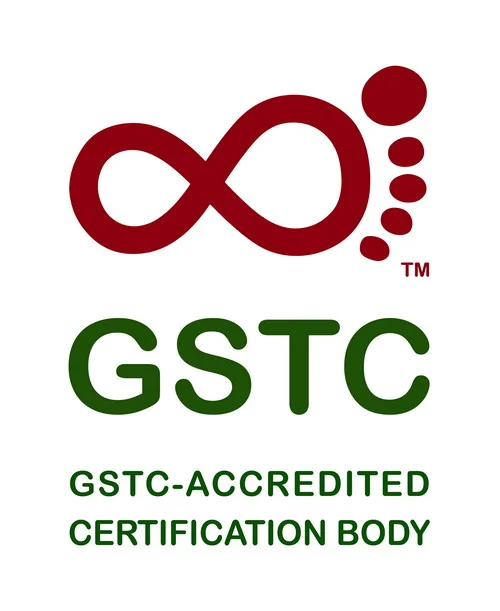
About GSTC and Green Destinations

Our Certification Programs for Destinations are structured by Green Destinations Standard, recognised by the Global Sustainable Tourism Council (GSTC) and offers GSTC-Accredited certification to destinations in recognition of sustainable destination management.
“Obtaining GSTC-Accreditation affirms Green Destinations’ effort in complying with the highest international standards in order to establish and offer awards and certification programs.” – GSTC
The GSTC-Recognised Green Destination Standard covers a set of criteria to measure, monitor and improve sustainable destination efforts.
Our GSTC-Accredited Certification Programs
Green Destinations’ Certification Program enhances destinations’ sustainability and quality, along with its visibility worldwide. Some benefits of our program are:
- Continuous and comprehensive assessment and improvement of a destination’s sustainability ‘performance’
- Accredited independent recognition of a destination’s efforts, achievements and positioning as a place that takes good care of its environment, people and culture
- The use of GSTC logo and Green Destinations Certification logos
- Promotion of the destinations across Green Destinations’ social media, website, and Good Travel Guide platform
Green Destinations first Achieved GSTC-Accreditiation in 2018 and renewed this status in 2024.
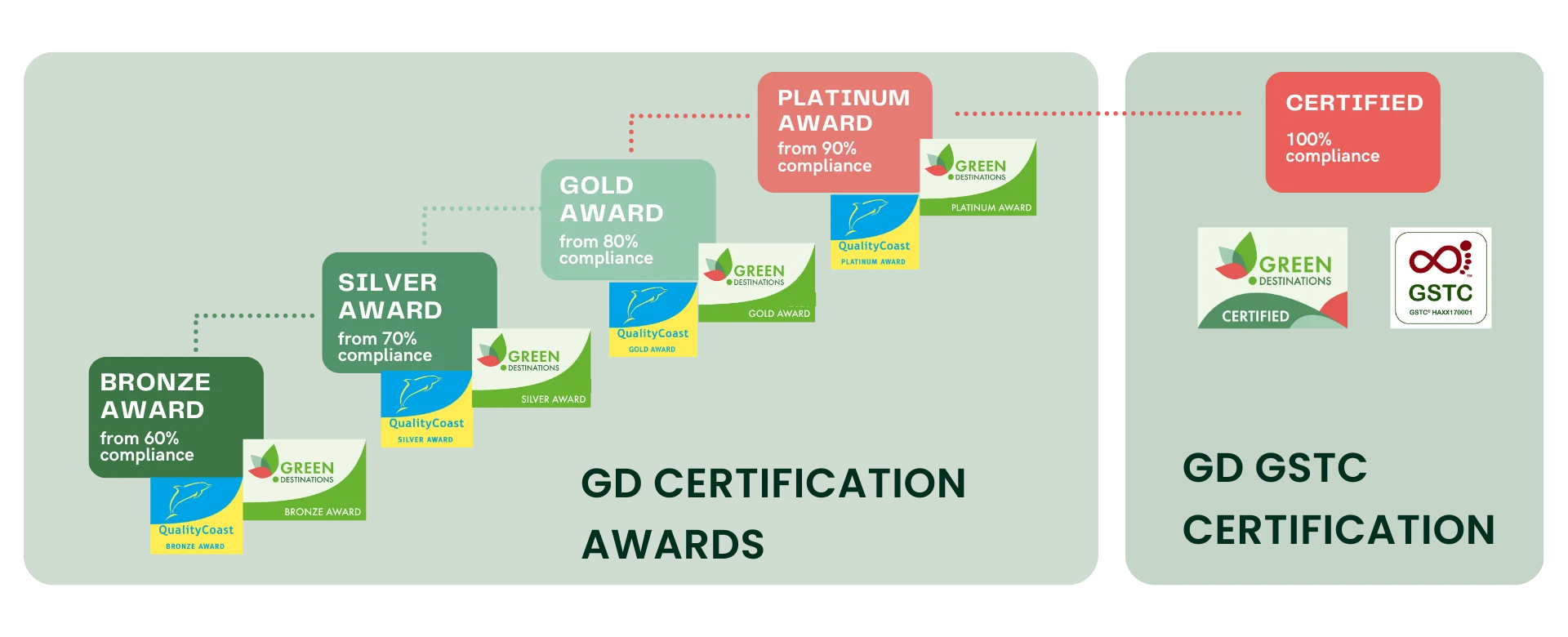
Affiliate Certification Programs
Green Destinations collaborates closely with other destination certification programs that chose Green Destinations for the back-office infrastructure and as Accredited Certification Body for their own (GSTC-Recognised) standard.
Mountain IDEAL is a certification scheme for mountain resorts in North America, with a number of well-known destinations certified such as Vail and Breckenridge (Colorado). It has a focus on the sustainability performance in a ski-resort context and is managed by the Walking Mountain Science Center.
Sustainability Label South Tyrol is a regional certification scheme in the bi-lingual Alpine region of Südtirol-Alto Adige in the north of Italy. Developed and managed by the regional organisation for Innovation, Development and Marketing (IDM), the South Tyrol Standard was derived from the GSTC-Destination Standard to become applicable to the regional context.
Our GSTC-Accreditation extends to these 2 schemes.

Our GSTC-Recognized Standard
The Green Destinations Standard (V2) is a GSTC-recognised set of criteria to measure, monitor and improve the sustainability policy and management of destinations and regions. It makes sustainable development concrete, objective and demonstrable. In 2020, the 1st GD Standard (developed in 2016) was updated based on consultation with the GD Partnership and re-aligned with the GSTC Destination Criteria V2 – prolonging its ‘GSTC Recognised Status’ in 2021.
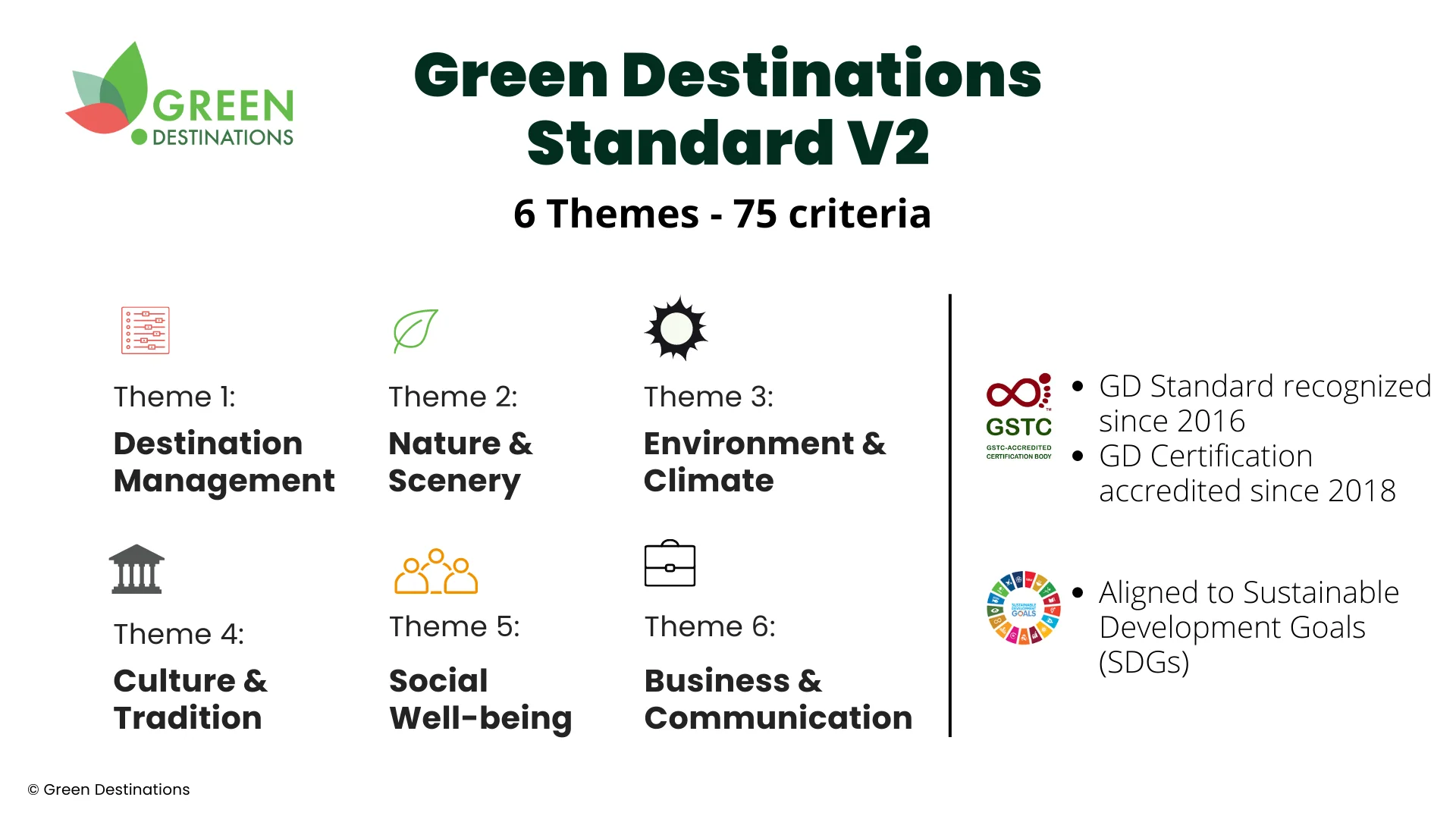
- Why We’re Different
- Join Our Team
- Strategic Alliances
- Why Tourism
- Strategic Planning
- Tourism Development
- Workforce Development
- Destination Management
- Destination Marketing
- Solimar DMMS
- Creative Portfolio
- Testimonials
- Tourism for Development Blog
- Case Studies
- Useful links
Global Sustainable Tourism Criteria
Promoting and implementing universal sustainable tourism principles around the world.
- Client: Global Sustainable Tourism Council
- Partners: United Nations Foundation, United Nations Environment Programme (UNEP), Rainforest Alliance, Sabre Holdings, Travelocity, Expedia Inc., United Nations World Tourism Organization (UNWTO)
- Project Duration: March 2007 – May 2009
Project Description
Sustainable tourism is on the rise: consumer demand is growing, travel industry suppliers are developing new green programs, and governments are creating new policies to encourage sustainable practices in tourism. But what does sustainable tourism really mean? How can it be measured and credibly demonstrated to build consumer confidence, promote efficiency, and fight greenwashing? In order to mainstream sustainable tourism it must be easy to understand for tourists and tourism businesses alike. There must be educational tools and market access mechanisms to drive learning about sustainability as well as create tangible financial incentives.
The Global Sustainable Tourism Criteria were developed as part of a broad initiative managed by The Partnership for Global Sustainable Tourism Criteria (GSTC Partnership), a coalition of over 40 organizations working together to foster increased understanding of sustainable tourism practices and the adoption of universal sustainable tourism principles. In an effort to come to a common understanding of sustainable tourism, the GSTC Partnership—initiated by the Rainforest Alliance, the United Nations Environment Programme (UNEP), the United Nations Foundation, and the United Nations World Tourism Organization (UNWTO)—developed a set of baseline criteria organized around the four pillars of sustainable tourism: effective sustainability planning; maximizing social and economic benefits to the local community; reduction of negative impacts to cultural heritage; and reduction of negative impacts to environmental heritage. For more information please visit http://www.gstcouncil.org/.
Major Activities
To initially develop the Criteria, Solimar supported the partnership through consultation with sustainability experts and the tourism industry and reviewed more than 60 existing certification and voluntary sets of criteria already being implemented around the globe. Major activities include:
- Establishing partnerships: formed a coalition of relevant stakeholders to come together to develop, adopt, and promote universal sustainable tourism criteria.
- Increasing awareness of sustainable tourism: creating and disseminating educational materials based on the criteria to help tourism businesses understand sustainable best practices.
- Developing Indicators: creating a set of measurement resources for the criteria so that certification programs and businesses can begin a measurable form of criteria implementaion
- Building capacity: creating a self-assessment tool for to guide businesses through the process of implementing sustainable best practices and providing guidelines for education and training bodies such as universities to follow and use.
The Global Sustainable Tourism Council (GSTC) serves as the international body for fostering increased knowledge and understanding of sustainable tourism practices, promoting the adoption of universal sustainable tourism principles and building demand for sustainable travel. This is accomplished through the work executed by its diverse programs: international standard-setting, destination stewardship, education and training, market access, and accreditation. Solimar has supported the GSTC through:
- The development of a dynamic and interactive website that serves as an educational hub for tourism businesses on how to become more sustainable and acquire the resources necessary to initiate, increase, or improve their sustainable operations.
- The creation and implementation of a comprehensive social media strategy
- An open source self-assessment tool for businesses to measure their current operations against the GSTC and identify areas of improvement.
- Ongoing technical support for detailed global consultation of tourism stakeholders
Related Stories
Solimar Continues Support for the Global Sustainable Tourism Criteria
This year marks Solimar’s fifth year working on the Global Sustainable Tourism Criteria – a groundbreaking set of voluntary guidelines created to provide an international understanding of sustainable tourism. The long term goal: strengthen consumer confidence in the tourism industry’s sustainability claims and provide a clear path for tourism business seeking more sustainability in their […]
Sustainable Tourism? Responsible Tourism? Ecotourism? What’s the Difference? And Should I Care??
Ahh, the age-old problem of semantics. The International Ecotourism Society says that ecotourism is, “Responsible travel to natural areas that conserves the environment and improves the well-being of local people.” ResponsibleTravel.com defines responsible tourism as, “Holidays that care about local communities and culture as well as wildlife conservation and the environment.” According to the United States Agency for International […]
Searching for a Sustainable Destination Management Model in Jordan
One of the greatest challenges facing destinations around the world is finding a way to bring together tourism stakeholders to work collaboratively to develop, manage, and market their tourism destination. It’s widely understood by tourism professionals that Destination Management Organizations (DMOs)play a key and important role in connecting the tourism industry and serving as an advocate […]


- GSTC Mission & Impacts
- GSTC History
- Market Access Program
- GSTC Board of Directors
- Assurance Panel
- Working Groups
- GSTC Sponsors
- GSTC Members
- Recruitment
- Contact GSTC
- GSTC For the Press
- Criteria Development, Feedback & Revisions
- Sustainable Tourism Glossary
- SDGs and GSTC Criteria
- GSTC Industry Criteria
- GSTC Destination Criteria
- GSTC MICE Criteria
- Criteria Translations
- GSTC-Recognized Standards for Hotels
- GSTC-Recognized Standards for Tour Operators
- GSTC-Recognized Standards for Destinations
- Recognition of Standards (for Standard Owners)
- GSTC-Committed
- Certification for Hotels
- Certification for Tour Operator
- Certification for Destination
- Accreditation for Certification Bodies
- Accredited Certification Bodies
- Stakeholder Consultations
- What is Certification? Accreditation? Recognition?
- Sustainable Tourism Training Program (STTP)
- Upcoming Courses
- Professional Certificate in Sustainable Tourism
- Professional Certificate in Sustainable Business Travel
- GSTC Trainers and Partners
- FAQs: GSTC Training Program
- Organization Membership Application
- Destination Membership Application
- Membership Policy
- Membership Categories & Fees
- Membership Payment Options
- Webinars for GSTC Members
- Members Log In
- Upcoming Webinars
- GSTC2024 Sweden, Apr 23-26
- GSTC2024 Singapore, Nov 13-16
- Past Conferences
- Destination Stewardship Report
Public Consultation
Revision of the gstc accreditation manual for certification of hotel/accommodation & tour operator v.4.0, gstc criteria, the global sustainability standards in travel and tourism, gstc2024 global conference, royal djurgården, stockholm, sweden - april 23-26, for hotels & accommodations, for tour operators, for destinations & governments, for corporate & business travel, for certification bodies, for travelers, recent news.

The Global Sustainable Tourism Council launches the Early Adopter Program for the GSTC MICE Criteria
Stefi 2024-03-20T18:56:00+08:00 March 20th, 2024 |

The Global Sustainable Tourism Council (GSTC) publishes new GSTC MICE Criteria
Stefi 2024-03-19T16:09:47+08:00 March 19th, 2024 |

The Global Sustainable Tourism Council (GSTC) announces its First Monitoring and Evaluation Report
Stefi 2024-03-18T17:15:35+08:00 March 18th, 2024 |
UPCOMING WEBINARS

Exploring New Zealand’s Qualmark Standard | March 25th, 2024
Adriana Pizzi 2024-03-21T00:43:33+08:00 May 13th, 2022 |

GSTC Webinar Recording: Accessible & Inclusive Travel
rariel 2023-07-07T22:53:57+08:00 June 14th, 2019 |

GSTC offers its members unique webinars, you can watch the recordings of past webinars
wadmin 2023-02-04T04:00:01+08:00 January 25th, 2011 |
UPCOMING TRAININGS
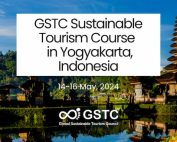
GSTC Sustainable Tourism Course (Bahasa Indonesia) in Yogyakarta, Indonesia, 14-16 May, 2024
Jisun Kim 2024-03-07T19:23:31+08:00 February 29th, 2024 |

Σεμινάριο Αειφόρου Τουρισμού GSTC (Ελληνικά) στην Αθήνα, Ελλάδα, 28-29 Μαρτίου, 2024
Jisun Kim 2024-02-09T17:47:06+08:00 February 9th, 2024 |

Σεμινάριο Αειφόρου Τουρισμού GSTC (Ελληνικά) στην Αθήνα, Ελλάδα, 27-28 Φεβρουαρίου 2024
Jisun Kim 2024-02-09T17:26:09+08:00 February 9th, 2024 |
CURRENT PUBLIC CONSULTATIONS
GSTC Attraction Criteria Development Public Consultation (until March 15th)
Public Consultation on GSTC Accreditation Manual Revision v.4.0 (until April 6th)
“ The GSTC certification is a testament to Marina Bay Sands’ ongoing commitment to minimize our environmental impact while providing our guests with a luxurious experience. Being the largest hotel in Singapore to be GSTC-certified shows our commitment in raising the bar for the industry and inspiring other players to adopt more sustainable practices. “ Meridith Beaujean Executive Director of Sustainability, Marina Bay Sands
“ Collaborating with an esteemed body like GSTC reinforces our dedication to leading the industry towards a more sustainable future. It’s imperative that we work with key global players like GSTC to drive change, set benchmarks, and inspire others to follow.” Julia Simpson WTTC President & CEO
“ Japan Airlines is honored to become a member of the GSTC. JAL places ESG strategy at the core of its management plan and strives to make various efforts. We expect to learn a lot from the council and make progress in our efforts to realize a sustainable society. “ OCHI Kenichiro Managing Executive Officer of Japan Airlines
“ We are honored to be among the first U.S. destinations to join the GSTC . We look forward to collaborating with GSTC and the Los Angeles City Tourism Department to build a thriving industry that improves the quality of life for all Angelenos. “ Adam Burke President and CEO, Los Angeles Tourism & Convention Board
“ Certifications give travelers reassurance and orientation. However, we also know there are certifications of varying quality in the tourism sector. That’s why we have been working with the GSTC, the Global Sustainable Tourism Council, for our hotels since 2012. We only accept sustainability certifications that are recognised by the independent GSTC and meet its strict standards .” Ian Corbett Head of Sustainability in TUI Group’s international sustainability team
“ With members spanning across the world, GSTC’s rigorous accreditation program not only elevates our initiative but also ensures that the hospitality sector worldwide moves toward a unified vision of sustainability .” Julia Simpson WTTC President & CEO
“ Joining the GSTC signifies our unwavering commitment to ensuring our activities are consistent with the long-term health of the communities and ecosystems where we operate. Through the GSTC community, we look forward to further collaboration with our partners across the travel and tourism industry to pave the way for a more sustainable and vibrant future . “ Caitrin O’Brien Vice President, Environmental, Social and Governance (ESG) at Four Seasons Hotels and Resorts
“ Being part of the GSTC provides us with ongoing connection to a global framework and network of professionals who are looking to solve the same challenges. We are really motivated to be part of it, and to learn, share and work together to ensure the industry we all love stays protected and respected for our future generations to enjoy. “ Jemma Fastnedge Chief Sustainability Officer, Big Red Group
“We want to increase consumer awareness of GSTC as the leading tourism sustainability standard. In the future, we hope that all certified suppliers will be able to use the GSTC logo.” Jim Sano Vice President for Travel, Tourism and Conservation, WWF
“Taking WWF’s recommendation of GSTC also simplified processes for RCL and promises to do the same for consumers.” Stephanie DeMars Corporate Responsibility Specialist, Royal Caribbean Cruises
“We have been using the GSTC Criteria to prepare service providers and DMOs for possible future certifications.” Annika Sandström Tourism Manager, Region Västerbotten (Sweden)
“There can be hundreds of different sustainable tourism standards to choose from. The Global Sustainable Tourism Council has a reliable guide, and maintains recent sustainability criteria for hotels, destinations and tour operators.” Erik Solheim Previous Executive Director, UN Environment
“The St. Kitts Sustainable Destination Council was founded based on the principles of the GSTC Criteria for Destinations following St. Kitts and Nevis’s GSTC destination sustainability assessment.” Diannille Taylor‑Williams St. Kitts Ministry of Tourism
“ The GSTC’s Industry Criteria played an important role from the very beginning in terms of how we set that measure and approached the overall development of the program. For the Travel Sustainable program and all the relevant interconnected systems we have in place at Booking.com to support it to have achieved GSTC-Recognized status is something we are incredibly proud of and encourages us to continue evolving the program further in line with these high standards .” Danielle D’Silva Head of Sustainability at Booking.com
“By the end of 2021, we aim for all tour operators used by MSC Cruises at our frequent destinations to be certified to a GSTC certification programme, or to be engaged in the process.” MSC Cruises
“To evaluate a certification program, check to see if it has been reviewed by the Global Sustainable Tourism Council – GSTC, an independent nonprofit that has established standards for sustainability in travel” The New York Times
“For the past two years, the Global Sustainable Tourism Council (GSTC) has been busy accrediting certification bodies to certify highly sustainable operators” Lonely Planet
“Accredited Certification Bodies certify hotels, tour operators, and destinations to the GSTC Criteria. GSTC supports destinations in implementing the Criteria through trainings and assessments” McKinsey & Company
“There are lots of different certification bodies offering eco-certifications around the world. We’d recommend selecting one that is officially recognised or accredited by the Global Sustainable Tourism Council (GSTC)” Booking.com
“RCL has endorsed the Global Sustainable Tourism Council (GSTC), regarded by WWF as the leading standard for global sustainable tourism” Royal Caribbean Cruises
“We have aligned our LightStay management system with the criteria of the UN-founded Global Sustainable Tourism Council (GSTC), the most respected seal of approval for sustainable travel and tourism practices.” Hilton
“TUI delivered 10.3 million ‘greener and fairer’ holidays through 1,688 hotels that were certified to a standard recognised by the Global Sustainable Tourism Council in 2019.” TUI Group
“Planning a getaway? Consider destinations, hotels, and tour operators that meet Global Sustainable Tourism Council (GSTC) standards. By doing so, you can minimize your environmental impact and send a powerful message to the travel industry about sustainable travel choices.” World Wildlife Fund (WWF)
“To find a destination that’s officially certified as taking sustainability issues seriously, visit the GSTC (Global Sustainable Tourism Council) website” Skyscanner
“The GSTC Criteria are the most credible global standards for sustainable tourism based on a highly inclusive development process. They provide a holistic definition of sustainability in tourism” One Planet Network
“No other organization than GSTC stands for such a diverse and global group of sustainable tourism players. The regular exchange with GSTC has significantly helped us to strengthen our approach and to learn from the best practices of the international network GSTC unites.” Switzerland Tourism
“Accredited Certification Bodies certify hotels, tour operators, and destinations to the GSTC Criteria. GSTC supports destinations in implementing the Criteria through trainings and assessments” World Travel & Tourism Council
“TUI encourages all hotels offered to its 27 million customers to obtain certification that meets the GSTC Criteria. Sustainability expectations for accommodation suppliers are set in contracts.” TUI Group
“Think carefully about where to stay. Look for leading eco certification badges, such as the non-profit Global Sustainable Tourism Council” The Guardian
“We continue to identify opportunities to achieve GSTC certification for our hotels to ensure the sustainability of our operations.” Hilton
“The ATTA believes in the universal standards put forth by the Global Sustainable Tourism Council and that tourism businesses and destinations should adopt the criteria specifically in these four areas.” ATTA
“The Global Sustainable Tourism Council (GSTC) is a comprehensive resource for learning about tourism businesses and destinations that strive to protect and sustain the world’s natural and cultural resources.” The Globe and Mail
“For a list of global vendors, destinations, and hotels that abide by certain sustainability standards, explore the database at the Global Sustainable Tourism Council” Condé Nast Traveler
“We’re working with the Global Sustainable Tourism Council (GSTC) and other sustainability experts to share what properties like yours can do to make positive change in the industry.” Agoda

GSTC followers receive once a month updates of important developments and opportunities

GSTC Destination Criteria
- Published: Select Year
How useful was this resource?
Click on a star to rate it!
As you found this resource useful...
Share us on social media!
Description
The GSTC Destination criteria presents a comprehensive list of certification standards, indicators, criteria, and best practices for tourism stakeholder to use as basic guidelines for sustainable destination development and management. The GSTC criteria is organized into four main categories: management, socioeconomic, culture, and the environment.
“ Global Sustainable Tourism Council ; Select Year; GSTC Destination Criteria; BTRP-ID: 2618″
Like this Resource?
Report an entry
UN Tourism | Bringing the world closer
Share this content.
- Share this article on facebook
- Share this article on twitter
- Share this article on linkedin
UN Tourism and Croatia to Establish Research Centre for Sustainable Tourism
- 12 Apr 2024
UN Tourism is to work with the Government Croatia and the University of Zagreb to establish a research and development centre focused on sustainable tourism.
Croatia currently serves on UN Tourism’s Committee on Tourism and Sustainability, having chaired it between 2019 and 2023. Alongside the Government’s record of promoting responsible and sustainable tourism practices, this clear leadership and support for UN Tourism’s core values make it the ideal location to host a collaborative platform to drive innovation and catalyse positive change in the tourism sector.
Croatia leads by example in growing tourism in a sustainable manner
This landmark centre will engage stakeholders from the public and private sectors, academia, and civil society to will address some of the most critical challenges facing tourism, including:
- Reducing the Environmental Impact of Tourism: The centre will prioritize initiatives to minimize waste generation and plastic usage, thereby mitigating the environmental footprint of tourism activities.
- Increasing Usage of Renewable Energy and Energy Efficiency: By promoting the adoption of renewable energy sources and implementing energy-efficient practices, the centre aims to reduce carbon emissions associated with tourism operations.
- Accelerating Adaptation to Climate Change: Recognizing the urgent need to address climate-related risks, the centre will support adaptation strategies to enhance the resilience of tourism destinations and communities.
- Preserving Social Sustainability and Local Communities: The centre will work to safeguard the cultural heritage and livelihoods of local communities by promoting responsible tourism practices and equitable distribution of benefits.
- Enhancing Evidence-Based Policy Making: Through rigorous research and data analysis, the centre will provide policymakers with the evidence needed to formulate effective policies that balance tourism development with environmental and social considerations.
- Providing Relevant and Updated Research: The centre will serve as a hub for cutting-edge research and knowledge exchange, delivering timely insights and best practices for the sustainable development of tourism.
In Zagreb, the Minister of Tourism and Sport of Croatia Nikolina Brnjac and UN Tourism Secretary-General Zurab Pololikashvili signed a Memorandum of Understanding to create the cutting-edge research institution.
Welcoming the collaboration, Secretary-General Pololikashvili said: “Croatia leads by example in growing tourism in a sustainable manner. The new research centre in Zagreb will contribute to UN Tourism’s commitment to data-driven policymaking at the regional, national and destination level, ensuring tourism grows responsibly and inclusively, for the benefit of communities everywhere.”
Minister of Tourism and Sport of Croatia Nikolina Brnjac adds: “I am proud that UN Tourism, the most relevant tourism organization globally, has recognized our efforts in Croatian tourism management reform and our strong commitment to sustainable tourism and put forward the initiative to create the first UN Tourism Centre for sustainable tourism in Croatia together with the Ministry of Tourism and Sport of the Republic of Croatia. With the University of Zagreb as a partner in the establishment of this Centre, I am convinced that this Centre will be successful and provide very relevant research for future sustainable development of tourism.”
Related Links:
- Download News Release on PDF
- UN Tourism: Regional Department for Europe
- Transforming Tourism for Climate Action
- Sustainable tourism development
Related Content
Un tourism and hotelschool the hague to drive innovatio..., european committee of the regions and un tourism break ..., un tourism launches tourism investment guidelines for a..., un tourism members advance agenda for europe as region ....

- WEB STORIES New
- ENTERTAINMENT
- CAREER & CAMPUS
- INFOGRAPHICS
- ISL 2023-24

- Manorama Online
- Manorama News TV
- ManoramaMAX
- Radio Mango
- Subscription


Six stunning, sustainable travel destinations for a discerning traveller
New Delhi: Now that sustainability is becoming inevitable in every sphere of life, travel too has included the aspect to regard the future of the planet as a prime concern. The intriguing challenges of global warming, climate change, sustainable living and eco-friendly practices have become increasingly crucial while touring places now. Here are six destinations that seamlessly blend sustainability with tourism and hospitality:
Thailand The Land of Smiles and Hospitality is home to countless alluring experiences and attractions that make it an ideal destination for vacations, weddings, honeymoons, and bleisure trips. To blend tourism and sustainability, the country has implemented numerous initiatives, including ocean conservation, wildlife rehabilitation, and ecological restoration efforts. In the hospitality space, Krabi’s ultra-luxury beachside resort --– Phulay Bay, a Ritz-Carlton Reserve, stands as the epitome of sustainability. The property uses reusable bamboo straws and glass bottles instead of plastic tableware. Its in-room amenities are packaged with sustainable materials, such as beeswax. Striving for authenticity, it sources its drinking water from a natural spring in the Naga Mountains and incorporates local produce and ingredients from the Chef’s Garden in its culinary creations. The festive decorations in the resort are also exclusively made of natural and reusable materials, such as coconut shells, driftwood, leaves, and recycled glass bottles. Moreover, Phulay Bay encourages its patrons to contribute towards elephant conservation under the Help the Herd program at the Krabi Elephant House Sanctuary.
Seychelles The tropical paradise of the Seychelles is known for its crystal-clear waters thriving with marine life and unique flora and fauna. To preserve the sanctity of its ecosystem, the country has taken monumental steps, such as preserving its flagship tree, Coco de Mer, which is known to yield the biggest fruit in the world. They have also made significant efforts to save Dudongs, a rare and vulnerable marine life found at Aldabra Atoll, from extinction. The archipelago has also implemented the BIOPAMA-funded project to set up biosecurity measures to prevent invasive alien species from overriding the endemic flora and fauna on Aldabra. Pre-pandemic, the archipelago collaborated with the University of Oxford for the Aldabra Clean-Up Project to remove human-made waste, like plastic litter, from the sea that harmed aquatic creatures and the ecosystem. Through these nuanced efforts, the Seychelles strive to be an eco-conscious destination that prioritises sustainability and promotes positive tourism experiences.

Leisure travel shrugs off Covid blues in festive season
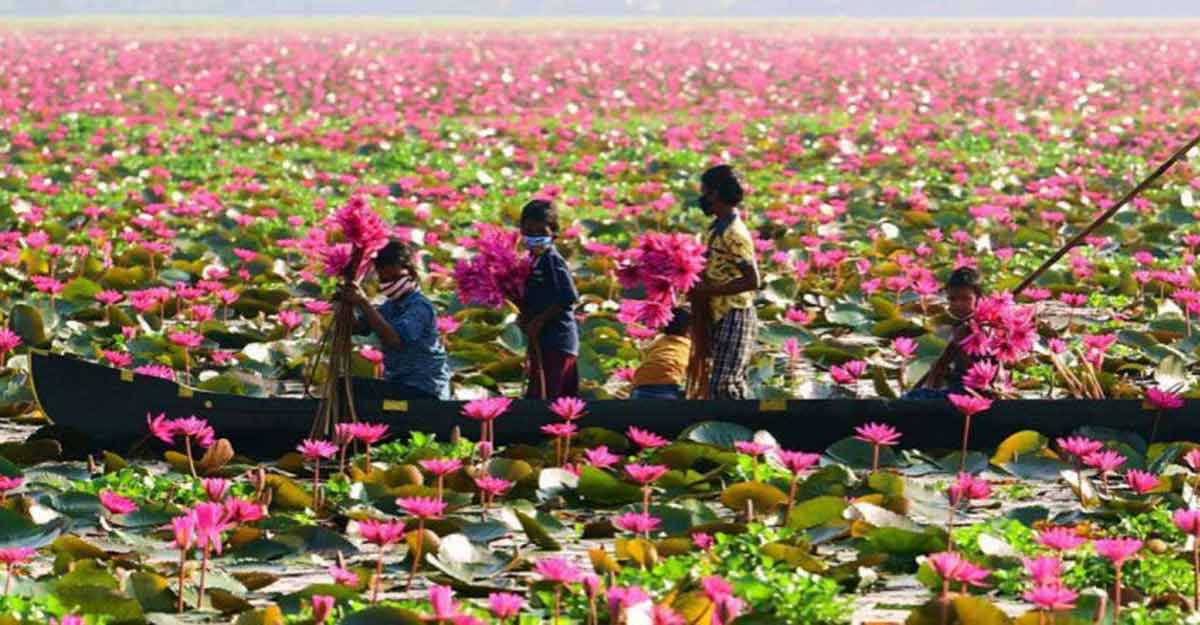
Water lilies offer a pretty sight at Ambattukadavu; but visitors watch out!
Oman Defined by age-old culture and innovation, Oman strives to achieve a net-zero future and preserve its ecosystem by encouraging sustainable practices. In Oman’s capital, Muscat, the grand five-star resort, Shangri-La Al Barr Jissah, has taken steps to realise this vision. As one of five turtle nesting sites in the country, its beaches welcome hundreds of turtles every year, serving as a safe sanctuary for these creatures to proliferate. Guests are invited to witness hatchings and watch daily Turtle Talks at the hotel’s Eco Centre to initiate the young generation into learning about biodiversity. Protecting the natural habits of critically endangered sea creatures is a priority for the team at the resort, and so their Turtle Care Project aims to protect the rare hawksbill and green turtle species through supervision and protection. The resort is actively working towards eliminating the use of single-use plastic and has adopted ways like using refilled bottles, drinking water fountains across the property, and replacing plastic straws with metallic ones.
Vietnam In recent years, Vietnam has taken many steps to balance the surge in tourism with the need to conserve its natural and cultural resources, including eco-friendly accommodations, energy-efficient transportation, and effective waste management systems. The Anam Mui Ne, a luxury resort located on the pristine Ham Tien beach in Phan Thiet, perfectly embodies Vietnam’s hospitality and sustainability efforts. An easy commute from Ho Chi Minh City, the five-star resort with 1.2 hectares of spectacular oceanfront has banned single-use plastics and taken several measures to reduce its carbon footprint. It uses solar power and utilises locally sourced and in-house ingredients to render scrumptious cuisines. The Anam Mui Ne also repurposes laundry water to nurture its gardens and offers biodegradable straws, bags, and bathroom amenities. Even the resort’s key cards are made of wood sourced from sustainably managed forests.
Kenya Home to stunning landscapes and untamed wildlife, Kenya is one of the best destinations for nature lovers and adventurers. It is home to scores of wildlife sanctuaries, like the Amboseli National Park, which is known for accommodating thousands of African animals, birds, and reptile species, as well as the Maasai tribe. The best way to immerse into Amboseli is to book a stay at Ol Tukai Lodge, an elegant eco-rated lodge that offers stunning views of glacier-capped Mount Kilimanjaro and the wetlands of the park outside. Being at the heart of nature, the lodge demonstrates its dedication to promoting vegetation and animals by undertaking activities like reforestation. Planting trees in areas that have been deforested contributes to combating climate change to fostering biodiversity. As a result of this Ol Tukai Lodge started a tree planting project with various stakeholders. To celebrate National Tree Planting Day last year, Ol Tukai Lodge collaborated with the Kenya Wildlife Service (KWS) to plant over 1,300 trees around the park. This was in line with Kenyan President Ruto's ambitious goal of planting 15 billion trees by 2030.
Sri Lanka Basking in the diversity of Sri Lanka’s natural attractions, Teardrop Hotels promotes sustainability and community wholeheartedly. Based across seven distinct locations across the country, each property embodies a unique part of Sri Lanka, from the serenity of the southwest coast to the frondescence of the south-central region. These hotels are built into heritage buildings and vintage tea bungalows carefully chosen for their character and diligently restored to preserve their original features. Teardrop Hotels also believes in giving back to the local community while also aiming for zero food miles. For this reason, they use vegetables and ingredients cultivated in-house and buy seafood from local fishermen to incorporate in their delicious cuisines. All packaging in the hotel is plastic-free, and refillable water bottles are used to minimise waste. (With inputs from IANS)
- Weekend Destination

Venad Express will skip Ernakulam South station from May 1 | Check revised schedule

Kochi Water Metro celebrates first anniversary, passenger footfall nears 20-lakh mark

UAE: No overstay fines for visitors whose flights got cancelled

Multiple entry Schengen visa for Indians: Here's what you should know

Authorities consider cancelling Venad’s stop at EKM South: Passengers miffed

Lok Sabha Election 2024: Expat voters from the Gulf arrive in chartered flights to cast votes

Water Metro starts service to Fort Kochi

Why is Spain's Canary Islands protesting against tourism? Details

- Get IGI Global News

- All Products
- Book Chapters
- Journal Articles
- Video Lessons
- Teaching Cases
- Recommend to Librarian
- Recommend to Colleague
- Fair Use Policy

- Access on Platform
Export Reference

- Advances in Hospitality, Tourism, and the Services Industry
- e-Book Collection
- Business Knowledge Solutions e-Book Collection
- Computer Science and IT Knowledge Solutions e-Book Collection
- Business and Management e-Book Collection
- Environmental, Agricultural, and Physical Sciences e-Book Collection
- Government and Law e-Book Collection

Promotion of Rural Tourism Destination for Community and Sustainable Destination Development: An Indigenous Study
Introduction.
Research for rural tourism development has both positive and negative effect of tourism on local community development, social, cultural and environmental and economic factors (Dai, 2023). Sociocultural attribute explains about the cultural value of rural areas, including social and cultural characteristics of local communities. Based on a socio-cultural interpretation, this study maintains that rurality is fundamentally the personification of rural culture. To reflect and gauge rurality also known as the cultural connotation of rurality. we need go back to the rural culture. Few studies have measured the cultural significance of rurality in rural tourism or the correlation between the two, despite the fact that rurality is vital to rural tourism inheriting the definition from a socio-cultural perspective (Chen, 2023). Thus, this research aims to systematically dissect the influence of tourist visitors and destination development for SDGs.
Many rural destinations have their own unique culture, ethnic existence and geographical roots. Developing rural tourism can be made easy having connection between small and medium tour operators, stakeholders. However, more job opportunities can be provided to the rural communities. The early stages of the development of heritage tourism should involve familiarizing oneself with planning, promotion, and marketing activities. Even though UNESCO was designating certain historical and archaeological sites as World Heritage Sites, The public's awareness of the attractions available at these locations is surprisingly limited (Shiong, 2017). Even though the development goes with positive direction, there are some negative drivers like seasonal opportunities in rural areas (Wilson S et al., 2001). Other challenges faced in rural areas are agriculture restructuring, lack of service provision, communication, survival of local communities and lack of promotions small rural family houses. Rural Tourism occurs in non-urbanised areas, typically include associated domains in the umbrella are natural resources, Agriculture, Folklore, national parks, forest, traditions, culture, ethnic practices, sustainability. Rural areas with geographical potential, with cultural and historic monuments can be considered most to improve rural tourism, including traditions, healthy food, outdoor activities, recreational activities. Apart from the before said agendas rural areas may consider more for cultivating organic agricultural products for generation of revenue. Rural households may be developed to provide accommodation facilities, and developing the images of rural destination. This case provide solution for the development of framework for the Government and Non-Government Agencies to develop the destination with in the strategical framework like Destination promotion, Destination Marketing, Quality of rural tourism products. This framework develops the satisfaction of the customers.
Sustainability
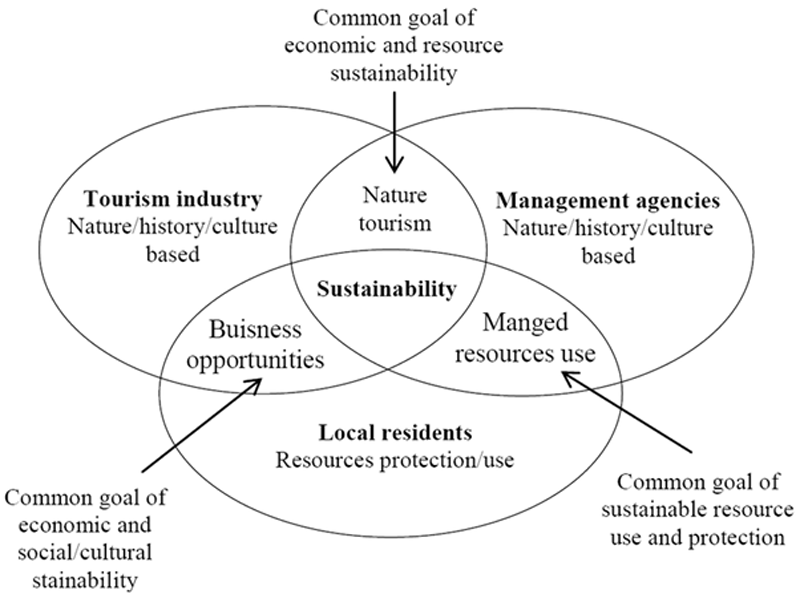
Complete Chapter List
![global sustainable tourism criteria for destinations AWW Media [US]](https://img-s-msn-com.akamaized.net/tenant/amp/entityid/BB1kdTYO.img)
AWW Media [US]
11 Best Travel Destinations for 2024
Posted: April 24, 2024 | Last updated: April 24, 2024

As the world of travel continues to evolve, 2024 promises to be the best year yet for explorers and adventure-seekers around the globe. With travel restrictions a thing of the past and a renewed enthusiasm for international experiences, travelers are eagerly searching for the next great destination to add to their itineraries. The tourism industry is responding with innovative approaches to meet the demand for immersive, authentic, and sustainable adventures, making this an opportune time to discover the best places to visit.

Emerging Trends in Global Travel
The travel landscape for 2024 is defined by enhanced sustainability, cultural intimacy, innovative accommodations, and a richer approach to local cuisines. As travelers seek new experiences, technology, and services, the emergence of diverse travel niches, from art-focused journeys to wilderness adventures, indicates a dynamic shift in global travel trends.

Sustainable and Eco-Tourism
Sustainable travel is increasingly important for travelers who wish to minimize their environmental impact. Destinations such as France are leading the way with eco-friendly practices and accommodations. Eco-tourism is not just a trend; it’s a responsible approach to exploring the world while preserving it for future generations.

The Rise of Indigenous Tourism
Indigenous tourism offers authentic cultural experiences and is gaining popularity among travelers who seek to understand and respect the cultural heritage of the places they visit. Notably, this form of tourism supports indigenous communities economically and socially.
Canada is one of the leaders in Indigenous Tourism an d British Columbia has some great tourism ideas.

Culinary Explorations and Experiences
The culinary scene has become inseparable from travel. Gastronomic experiences, from street food in Lima to Michelin star dining in Rome, are vital in many people selecting destinations. These edible explorations serve as cultural gateways for travelers.
Foodie Cities:
- Rome: Renowned for its Michelin-star offerings
- Lima: Celebrated for innovative culinary delights

Adventure and Wellness Travel
Travelers are increasingly drawn to combining adventure travel with wellness experiences. Journeys geared towards the body and spirit are gaining traction, with an emphasis on UNESCO World Heritage sites, and opportunities like yoga in pristine national parks.
- Rainforests and national parks : Preferred destinations for dual adventure and wellness experiences

Art and Culture Travel
Cultural travelers are drawn to cities buzzing with artistic movements. Whether it’s the Art Nouveau allure of European cities or the UNESCO-designated sites around the world, art and culture enthusiasts are finding more ways to engage with history and creativity.
- Art Nouveau landmarks and UNESCO World Heritage sites : Attracting art and culture aficionados

Wildlife and Natural Landscapes
For those captivated by nature, 2024 offers an abundance of wildlife encounters and sprawling natural landscapes. Eco-conscious travelers relish experiences like observing wildlife in their natural habitats or exploring the biodiversity of rainforests.
- National parks and rainforests : Key locations for wildlife enthusiasts

Urban Escapes and City Breaks
The allure of cities never fades, with metropolises like New York offering an ever-evolving landscape for travelers. The fast-paced lifestyle and dense cultural tapestry of urban environments provide an enduring appeal for short yet enriching breaks.
- New York : A perennial favorite for dynamic city experiences
- Boutique hotels and cultural landmarks: Enhancing urban travel experiences

Top Destinations for 2024
The upcoming year offers an array of destinations for every type of traveler, focusing on uncharted European locales, bustling Asian metropolises, North America’s varied terrain, South American culture, Africa’s natural wonders, Australia’s distinct offerings, India’s immersive experiences, and Scandinavia’s pristine beauty.
Europe’s Hidden Gems
While Paris and Rome remain timeless, 2024 is the year to explore Bodrum , Turkey. Once a quiet fishing village, Bodrum has transformed into a luxurious escape, boasting high-end resorts such as the Hilton Bodrum Turkbuku Resort & Spa . In Eastern Europe, the serene landscapes and rich history of cities like Istanbul captivate visitors looking for both modernity and tradition.

Asia’s Must-Visit Cities
Asia’s megacities continue to thrive, with travelers drawn to the high-speed energy of places like Tokyo . For a change of pace, the Eastern & Oriental Express offers a luxurious rail journey connecting the wonders of Singapore, Malaysia, and Thailand. Hong Kong and Seoul also top the list, offering cutting-edge urban experiences alongside rich cultural heritage.

North America’s Diverse Landscapes
North America’s diversity shines in destinations like New York , where cityscapes and culture converge. Santa Fe , New Mexico, is celebrated for its Pueblo-style architecture and vibrant art scene. In Canada, the rugged beauty of places like Banff National Park provides an unrivaled wilderness experience.

Exploring South America’s Richness
Brazil’s vibrant cities and lush rainforests beckon adventurers and beach-goers alike. Over in Ecuador , Quito stands out as a city teeming with colonial history, nestled among volcanic peaks. The region promises a blend of natural splendor and enriching cultural encounters.
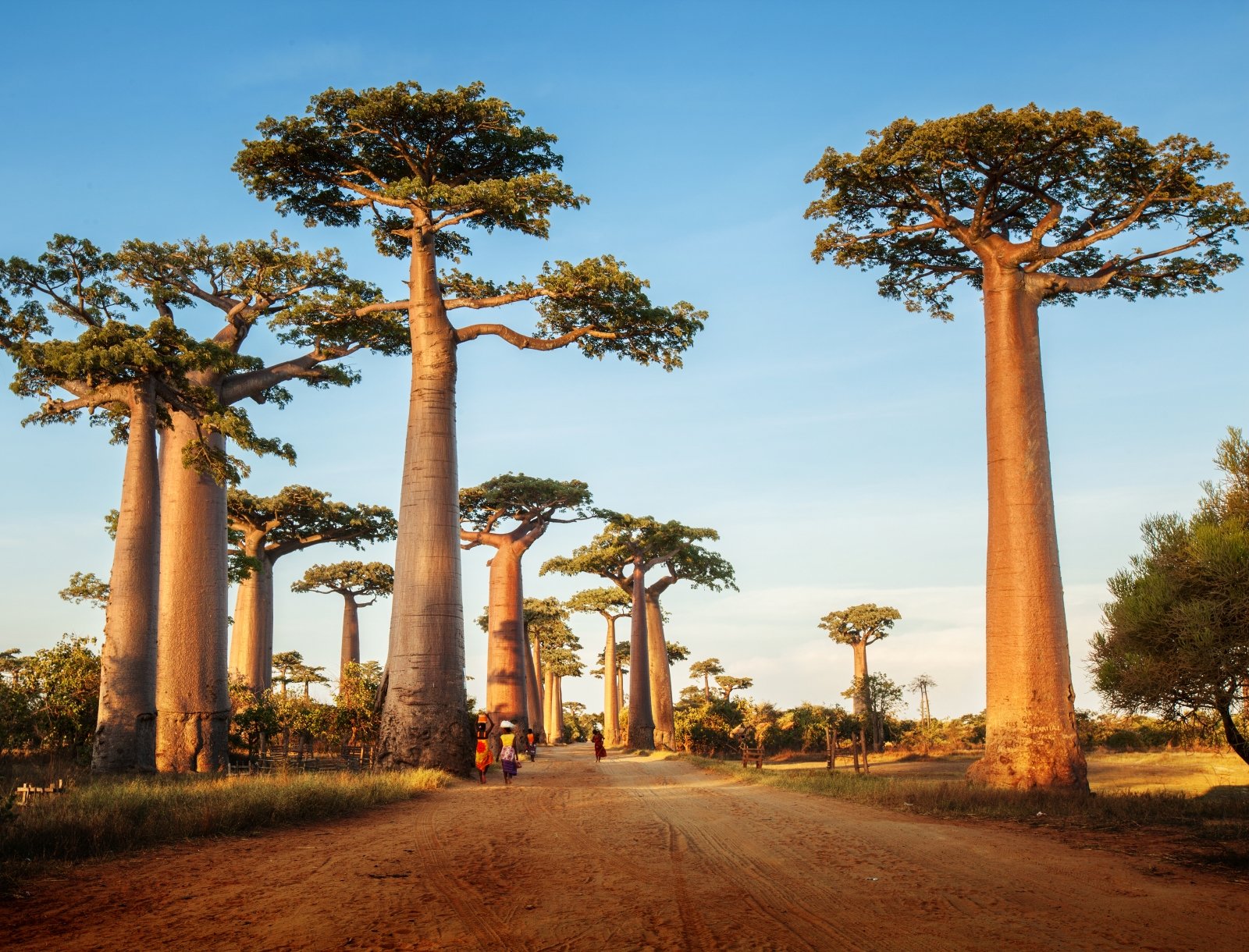
The Best of Africa
Madagascar offers a unique travel experience with its endemic wildlife and breathtaking landscapes, including the Avenue of the Baobabs.

Unique Experiences in Australia and Oceania
Australia presents a tapestry of experiences, from the Great Barrier Reef to the cultural hubs of Sydney and Melbourne. Journey to French Polynesia to discover idyllic islands like Bora Bora, combining luxury and seclusion with their overwater bungalows and pristine lagoons.

Discovering the Culture and Nature of India
India is a land of contrasts, with Agra ‘s Mughal grandeur at one end and the tranquil backwaters of Kerala at the other. Travelers can immerse themselves in the vibrant colors, profound spirituality, and diverse cultures that thrive within the subcontinent’s borders.
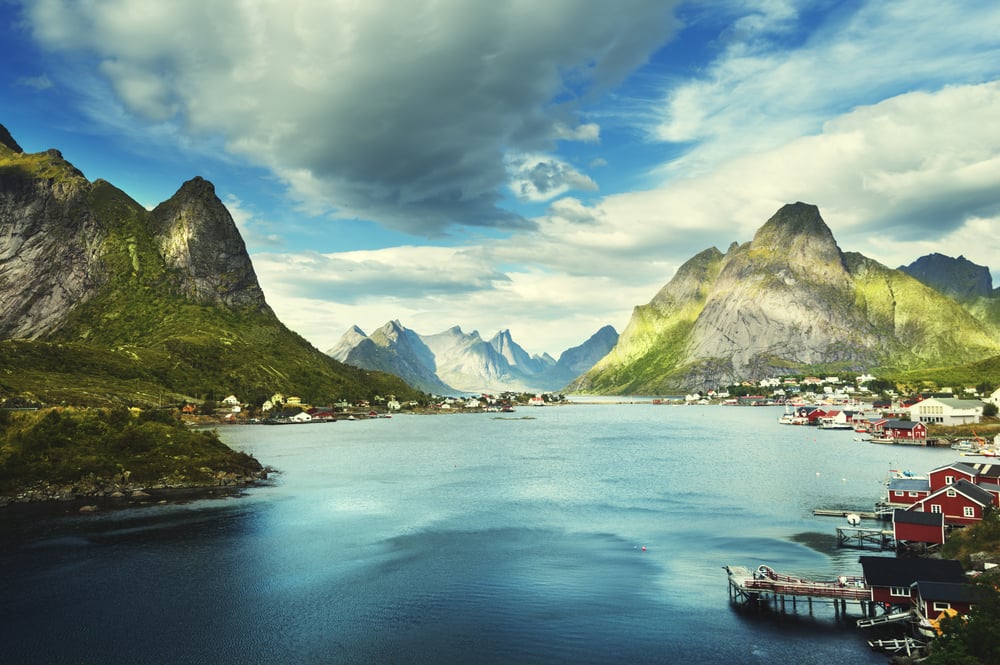
Unforgettable Journeys in Scandinavia and the Nordics
Traveling through Scandinavia, one cannot miss the fjords of Norway or the otherworldly landscapes of Iceland . These regions offer some of the world’s most magnificent natural displays, including the Northern Lights and the Midnight Sun, contrasting with the cutting-edge Nordic cities known for design and sustainability.

Seasonal Travel Guide for 2024
Selecting the right destination based on the season can greatly enhance a traveler’s experience. This guide highlights optimal destinations and activities for each season in 2024, considering factors like weather, seasonal experiences, and the best times to visit.
![Winter Wonders: December to February <p><strong>[Iceland – December]:</strong> One can witness <strong>Iceland’s enchanting winter landscapes</strong> and have a chance to observe the Northern Lights. Despite the cold, travelers are rewarded with fewer crowds and the potential for a magical New Year celebration under the aurora borealis.</p><p><strong>[Mediterranean – January]:</strong> While typically less crowded during winter, some Mediterranean destinations offer mild climates ideal for exploring historic sites without the heat of summer. However, beach activities may be limited during this time.</p><p><strong>[Paris – February]:</strong> Paris in February can be cold, but it’s an excellent time to visit indoor attractions like museums and galleries. The after-holiday lull results in shorter lines and the romance of the city is amplified around Valentine’s Day.</p>](https://img-s-msn-com.akamaized.net/tenant/amp/entityid/AA1nAG04.img)
Winter Wonders: December to February
[Iceland – December]: One can witness Iceland’s enchanting winter landscapes and have a chance to observe the Northern Lights. Despite the cold, travelers are rewarded with fewer crowds and the potential for a magical New Year celebration under the aurora borealis.
[Mediterranean – January]: While typically less crowded during winter, some Mediterranean destinations offer mild climates ideal for exploring historic sites without the heat of summer. However, beach activities may be limited during this time.
[Paris – February]: Paris in February can be cold, but it’s an excellent time to visit indoor attractions like museums and galleries. The after-holiday lull results in shorter lines and the romance of the city is amplified around Valentine’s Day.
![Spring Escapes: March to May <p><strong>[Cherry Blossoms – March/April]: Japan’s</strong> cherry blossom season is a splendid time to stroll through blooming gardens and partake in hanami, the traditional viewing picnics. These months offer a mesmerizing experience as the pink and white colors adorn cities.</p><p><strong>[Paris – May]:</strong> <strong>Paris</strong> in spring blossoms with not just flowers in Luxembourg Gardens but also with visitors. The moderate climate and blooming gardens make it the best time to visit before the peak tourist season begins.</p>](https://img-s-msn-com.akamaized.net/tenant/amp/entityid/AA1nAKJj.img)
Spring Escapes: March to May
[Cherry Blossoms – March/April]: Japan’s cherry blossom season is a splendid time to stroll through blooming gardens and partake in hanami, the traditional viewing picnics. These months offer a mesmerizing experience as the pink and white colors adorn cities.
[Paris – May]: Paris in spring blossoms with not just flowers in Luxembourg Gardens but also with visitors. The moderate climate and blooming gardens make it the best time to visit before the peak tourist season begins.
![Summer Getaways: June to August <p><strong>[Beaches – June to August]:</strong> Summer is ideal for beach vacations, and the Mediterranean shines with hotspots like the A<strong>malfi Coast.</strong> Travelers can enjoy the sun-soaked shores, azure waters, and lively coastal towns during these peak months.</p><p><strong>[Europe – August]:</strong> Europe in August thrives with tourists. Destinations like<strong> Greece, Spain, and Italy</strong> embrace the warm weather with open-air festivals, markets, and abundant outdoor dining options.</p>](https://img-s-msn-com.akamaized.net/tenant/amp/entityid/AA1nARny.img)
Summer Getaways: June to August
[Beaches – June to August]: Summer is ideal for beach vacations, and the Mediterranean shines with hotspots like the A malfi Coast. Travelers can enjoy the sun-soaked shores, azure waters, and lively coastal towns during these peak months.
[Europe – August]: Europe in August thrives with tourists. Destinations like Greece, Spain, and Italy embrace the warm weather with open-air festivals, markets, and abundant outdoor dining options.
![Autumn Adventures: September to November <p><strong>[Foliage – September/October]:</strong> As autumn unfurls, regions like<strong> New England</strong> in the United States and the <strong>Alps in Europe</strong> display spectacular foliage. The crisp weather is perfect for hiking and enjoying the kaleidoscope of fall colors.</p><p><strong>[Autumn Festivals – October/November]:</strong> Europe continues to dazzle with autumn festivals celebrating the harvest. From <strong>wine festivities in France to Germany’s Oktoberfest</strong>, the cooler temperatures and dimming crowds can make for a festive and comfortable holiday.</p><p>I hope this gets you excited for travel this year and if you can find something I should have on my radar, let me know.</p>](https://img-s-msn-com.akamaized.net/tenant/amp/entityid/AA1nATw6.img)
Autumn Adventures: September to November
[Foliage – September/October]: As autumn unfurls, regions like New England in the United States and the Alps in Europe display spectacular foliage. The crisp weather is perfect for hiking and enjoying the kaleidoscope of fall colors.
[Autumn Festivals – October/November]: Europe continues to dazzle with autumn festivals celebrating the harvest. From wine festivities in France to Germany’s Oktoberfest , the cooler temperatures and dimming crowds can make for a festive and comfortable holiday.
I hope this gets you excited for travel this year and if you can find something I should have on my radar, let me know.
More for You
Cuban mercenaries eliminate Russian regiment commander in Donetsk region
19 Things That Will Happen When You Stop Drinking Alcohol
I Was Told My Father Was A 'Deadbeat.' After He Died, I Found Out Everything I Knew About Him Was Wrong.
LeBron James explodes on Darvin Ham during Lakers' Game 4 victory over the Nuggets
Last letters of pioneering climber who died on Everest reveal dark side of mountaineering
This Social Security Spousal Rule Is Officially Finished in 2024 — But These 3 Strategies Remain
The Factory Turbocharged Car With The Most Horsepower In 2024
How Much Beer You'd Have To Drink To Equal A Single Shot Of Liquor
18 Most Common Reasons Women Leave Their Marriages
Scientists Discover a 10,000-Year-Old Man-Made Megastructure Under the Baltic Sea
Scientists claim people with this blood type more likely to have early stroke
I’m a psychologist and mom—here are 3 phrases I wish more parents would say to their kids
5 Most Powerful Dodge Crate Engines Ever Built (And What They Cost)
The first interracial kiss aired on TV more than 55 years ago—and more shows that broke racial barriers
Here Are the Fastest Declining States in America in Terms of Population
17 Most Popular Baby Names From the 1970s
3 reasons you keep waking up in the middle of the night
'10-foot-tall people' discovered by archaeologists in Nevada cave
Remembering Fran
Say goodbye to Ruby Tuesday and Chili’s. These are the hot new restaurants at the mall

IMAGES
COMMENTS
The Global Sustainable Tourism Council (GSTC) Criteria were created to provide a common understanding of sustainable tourism. The GSTC Destinations Criteria -known informally also as "GSTC-D" -- are the minimum that any tourism destination should aspire t o reach. They are organized around four main themes: sustainable
Global Sustainable Tourism Criteria for Destinations ver. 1.0 - 1 November 2013 3 Global Sustainable Tourism Criteria for Destinations A3 Monitoring The destination has a system to monitor, publicly report, and respond to environmental, economic, social, cultural, tourism, and human rights issues.
The Global Sustainable Tourism Criteria. Created with the input of experts, groups and companies from around the planet. Define sustainable tourism in a way that is actionable, measurable and credible. The minimum standard of sustainability for tourism businesses and destinations across the globe.
Global Sustainable Tourism Criteria for Destinations ... GLOBAL SUSTAINABLE TOURISM COUNCIL Capitán Haya 42, 28020 Madrid, Spain Tel +34 91 567 81 00 Fax +34 91 571 37 33 www.gstcouncil.org CRITERIA INDICATORS A3 Monitoring The destination has a system to monitor, publicly report,
After an organization named the "Partnership for Global Sustainable Tourism Criteria" was formed in 2007, GSTC is a multi-stakeholder initiative formed in 2010 under the umbrella of the United Nations, in response to the challenges and opportunities of sustainable tourism, serving as the international body for fostering increased knowledge and understanding of sustainable tourism practices ...
Destination Stewardship Report - Summer 2020. The GSTC Destination Criteria (GSTC-D) were revised last year with global public consultation. The criteria were first developed through a stakeholder consultation process leading to their initial publication (Version 1.0) on 1st November 2013. In 2018 the first revision of the GSTC-D began.
The Global Sustainable Tourism Criteria were launched by the United Nations Foundation, UNWTO, UNEP and the Rainforest Alliance at the IUCN World Conservation Congress 2008. The new criteria - based on thousands of best practices culled from the existing standards currently in use around the world - were developed to offer a common framework to guide the emerging practice of sustainable ...
The Global Sustainable Tourism Criteria Luigi Cabrini, Chair, Global Sustainable Tourism Council (GSTC), Advisor of the UNWTO Secretary General Ref. Ares(2016)699960 - 09/02/2016. ... Criteria for Destinations (Nov 2013) Criteria for Hotels and Tour Operators (2008, rev.2012)
The Global Sustainable Tourism Council (GSTC), the leading organization on sustainable tourism accreditation, recently released their Destination Criteria 2.0 to provide a common framework for examining destination level sustainable tourism certification.
GSTC (Global Sustainable Tourism Council) is an international non-profit organization established in 2008 with the aim of promoting sustainable tourism and creating international standards for sustainable tourism. ... 2008) and GSTC-D (Global Sustainable Tourism Criteria for Destinations, 2013, revised in December 2019 and now known as GSTC ...
The Green Destinations Standard (V2) is a GSTC-recognised set of criteria to measure, monitor and improve the sustainability policy and management of destinations and regions. It makes sustainable development concrete, objective and demonstrable. In 2020, the 1st GD Standard (developed in 2016) was updated based on consultation with the GD ...
The Global Sustainable Tourism Criteria (GSTC) is a set of voluntary principles that provide a framework for the sustainability of tourism businesses across the globe. ... 108 organizations certified and accredited worldwide 14 destinations certified and accredited worldwide *15 standards have been Recognized as aligned with the Global ...
The GSTC Global Destination Sustainability Report is a companion report to the 2020 Adventure Tourism Development Index (ATDI), a product of a partnership with the Global Sustainable Tourism Council (GSTC) and designed to more deeply explore the sustainability dimension of adventure tourism competitiveness worldwide. The companion report analyzes 24 destinations that have applied the GSTC ...
The Global Sustainable Tourism Criteria were developed as part of a broad initiative managed by The Partnership for Global Sustainable Tourism Criteria (GSTC Partnership), a coalition of over 40 organizations working together to foster increased understanding of sustainable tourism practices and the adoption of universal sustainable tourism ...
"The St. Kitts Sustainable Destination Council was founded based on the principles of the GSTC Criteria for Destinations following St. Kitts and Nevis's GSTC destination sustainability assessment." ... That's why we have been working with the GSTC, the Global Sustainable Tourism Council, for our hotels since 2012. ...
The GSTC Destination criteria presents a comprehensive list of certification standards, indicators, criteria, and best practices for tourism stakeholder to use as basic guidelines for sustainable destination development and management. The GSTC criteria is organized into four main categories: management, socioeconomic, culture, and the environment.
In Zagreb, the Minister of Tourism and Sport of Croatia Nikolina Brnjac and UN Tourism Secretary-General Zurab Pololikashvili signed a Memorandum of Understanding to create the cutting-edge research institution. Welcoming the collaboration, Secretary-General Pololikashvili said: "Croatia leads by example in growing tourism in a sustainable ...
Walking the Talk Science-Based Climate Targets Key to Sustainable Tourism JoAnna Haugen Published 1 week ago. About a 5 minute read. ... Destinations around the globe reliant on tourism are already reeling from the impacts of a ... SBTi is an organization that develops criteria and provides tools and guidance for companies to set science-based ...
The tourism industry has recently undergone a significant evolution because of the implementation of Information and Communication Technologies (ICT). These changes have raised new conceptions of destinations, thus giving rise to smart destinations. In this context, digital tracking of tourists has become of great interest. This article aims to analyze the research landscape on tourist ...
For instance, the Global Sustainable Tourism Council offers a straightforward guide to finding Certified Sustainable Destinations. At the core: Never harm or overlook the essence of a place.
The intriguing challenges of global warming, climate change, sustainable living and eco-friendly practices have become increasingly crucial while.Travel. destinations. journey. unwinding. places. stunning places. sustainable travel. discerning traveller
Global Sustainable Tourism Destinations Criteria Draft destination level Global Sustainable Tourism Criteria as proposed after Destinations and International Standards joint working group meeting and follow-up ballot- 2 February 2012. Reviewed and approved with changes by Board ballot, 13 February 2012. Returned to Secretariat by February 21, 2012.
Promotion of Rural Tourism Destination for Community and Sustainable Destination Development: An Indigenous Study: 10.4018/979-8-3693-3390-7.ch016: Rural tourism is a part of tourism sector has been seeing fast growth. ... Search across all of IGI Global's available open access publishing opportunities to unleash your research potential.
The tourism industry is responding with innovative approaches to meet the demand for immersive, authentic, and sustainable adventures, making this an opportune time to discover the best places to ...